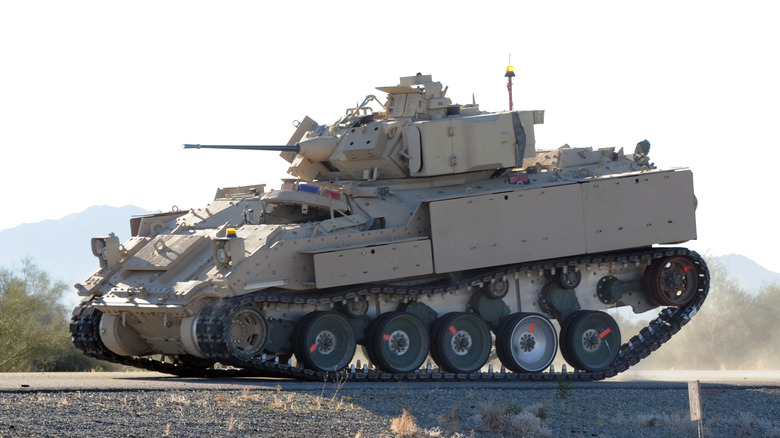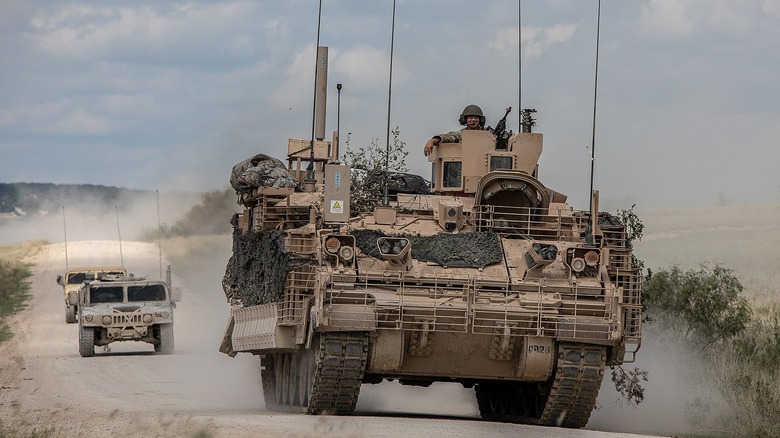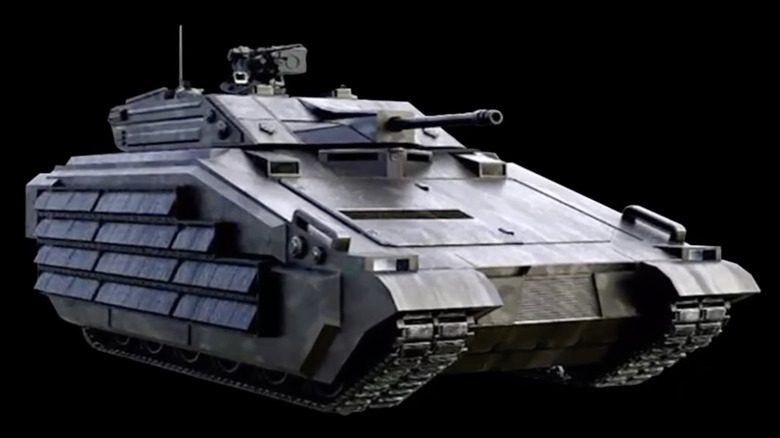What Is The Army's XM-30 Mechanized Infantry Combat Vehicle And What Can It Do?
Tanks, for their part, add to ground combat power by bringing a high level of lethality combined with mobility. During the Cold War, the U.S. needed a vehicle that could carry troops while also having enough firepower to engage and defeat Soviet tanks if need be. Out of this necessity was born the M2 Bradley Fighting Vehicle.
The M2 Bradley was created in 1981. In its more than 40 years of service, it has been an integral part of many conflicts, including the Gulf War of 1991 and Operation Enduring Freedom in 2003. More recently, it even played a part in the war in Ukraine. The Bradley has seen many variants and system upgrades over time. Early in 2024, the U.S. Army unveiled the newest version of its combat-tested Bradley, which is to be outfitted with the Iron Fist Active Protection System. These enhancements have proven effective, but as part of a modernization program designed to keep the U.S. one step ahead of its adversaries, the Army is now designing an even newer next generation tank called the XM30 Mechanized Infantry Combat Vehicle.
The XM30 will have the option to operate remotely
In June 2023, contracts were awarded to General Dynamics Land Systems Inc. and American Rheinmetall Vehicles LLC to develop prototypes of this next generation vehicle for the Army. Assistant Secretary of the Army, Acquisition, Logistics, and Technology Douglas R. Bush stated that the XM30 will be "bringing new transformational capabilities to the fight," including "improvements to lethality, Soldier-vehicle survivability, and upgrade ability beyond the physical and economic limits of the Bradley."
This new tank designed as a successor to the Bradley was originally called the Optionally Manned Fighting Vehicle or OMFV before being designated the XM30. Nevertheless, the phrase, "optionally manned," in the original name tells us an important clue about something the development team is looking to implement in the new tank. The next-gen fighting vehicle must be able to be remote controlled as well as traditionally crewed, thus giving the military more flexibility and adaptability with new systems as they come online.
The XM30 will be outfitted with beefed up protection systems
While a working prototype has not yet been developed, there are additional expectations that have been outlined in the program that will likely translate into the final product. The first is capacity: The XM30 will have a standard crew of two, but enough room to transport up to six soldiers. The Army has also asked that the prototype's weaponry also include a 50mm cannon on a remote turret as well as anti-tank missiles.
Advanced protection systems, a modular design for mission adaptability, and a hybrid powertrain will all contribute to a vehicle that increases both combat punch and survivability. According to the director of the next generation combat vehicle development Brig. Gen. Geoffrey Norman, "The XM30 meets the Army's requirements for a transformational increase in warfighting capability," and is "not simply another incremental improvement over the Bradley fighting vehicle." We will have to wait and see if the XM30 delivers.


